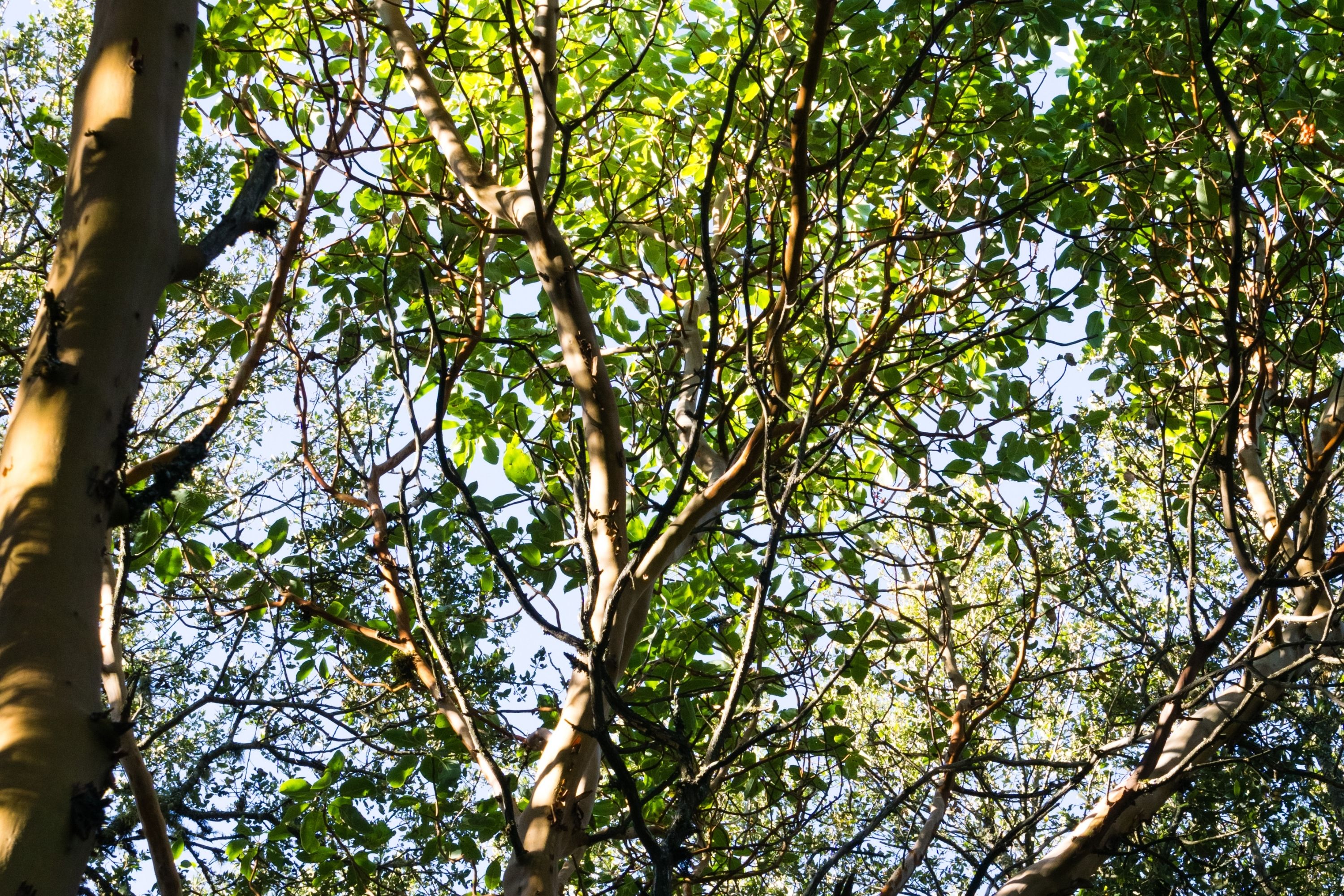Pacific madrone
(Arbutus menziesii)

Description
Arbutus menziesii or Pacific madrone (commonly madrona in the United States and arbutus in Canada), is a species of broadleaf evergreen tree in the family Ericaceae, native to the western coastal areas of North America, from British Columbia to California. Its waxy evergreen foliage, contorted growth habit, and distinctive flaky bark make it a striking sight in the coastal cliffs and hills where it is abundant. rbutus menziesii is an evergreen tree with rich orange-red bark that when mature naturally peels away in thin sheets, leaving a greenish, silvery appearance that has a satin sheen and smoothness. In spring, it bears sprays of small bell-like flowers, and in autumn, red berries.The berries dry up and have hooked barbs that latch onto larger animals for migration. It is common to see madronas of about 10 to 25 metres (33 to 82 ft) in height, but with the right conditions trees may reach up to 30 metres (98 ft). In ideal conditions, madronas can also reach a thickness of 5 to 8 feet (1.5 to 2.4 m) at the trunk, much like an oak tree. Leaves are thick with a waxy texture, oval, 7 to 15 centimetres (2.8 to 5.9 in) long and 4 to 8 centimetres (1.6 to 3.1 in) broad, arranged spirally; they are glossy dark green above and a lighter, more grayish green beneath, with an entire margin. The leaves are evergreen, lasting a few years before detaching, but in the north of its range, wet winters often promote a brown to black leaf discoloration due to fungal infections. The stain lasts until the leaves naturally detach at the end of their lifespan.
Taxonomic tree:







